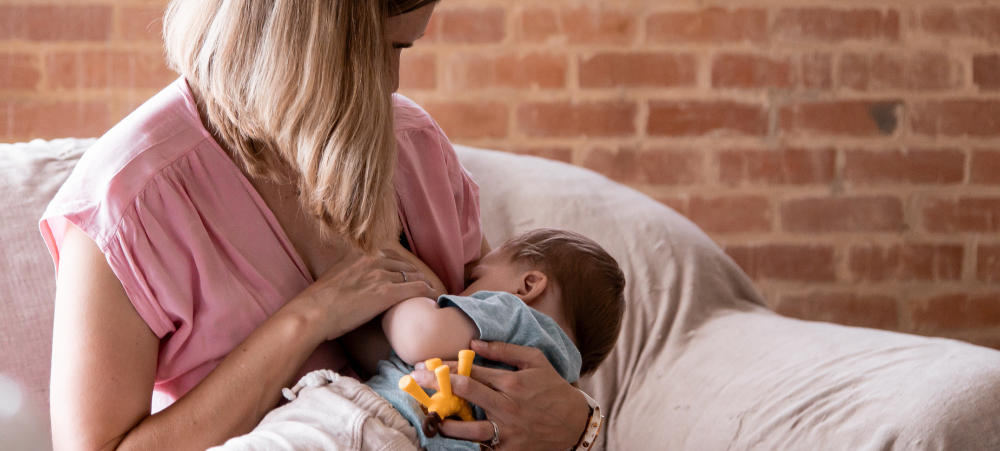The latest recommendations are to offer your baby nothing but breast for at least 6 months, for the healthiest start.
Many new mothers quite rightly relish this special time when their most important job is to feed and care for their child, and can easily commit to being there for every single feed. They may rely on having the lifestyle and support systems to enable them to do that, however, this isn’t easy for all moms.
Not all moms can be there for every feed, or they may choose to have a more flexible method of feeding, but which still ensures their baby has 100% breast milk even if she is not there to give the feed herself.
Expressing breast milk is easier and more comfortable than ever, and storage of milk in the freezer is safe and efficient. First things first though – if you want your baby to take both breast and bottle it’s vital that you concentrate on getting breastfeeding off to a great start first and establishing a good milk supply.
It’s vital that breastfeeding is your baby’s first and preferred method of feeding. It’s important that he learns the technique of feeding from the breast, and that you establish your milk supply to suit your baby’s needs. Expressing too much too soon can interfere with that, and introducing a bottle to your baby too soon may interfere with his breastfeeding. You both need time to establish that, and it normally takes around a month or so.
It works well to start expressing after the first couple of weeks or so, when you feel ready. In the morning, after your baby’s first feed is a good time as many moms find they have extra milk first thing. Try every morning, and freeze this milk for use later.
Some moms find expressing easy, others need to get used to it – practice really does help! You may express a small amount at first, but do it every day, for 20 minutes or so and see how you get on. It helps to be comfortable, relaxed and unhurried – after a bath or shower is ideal at first, being in the right frame of mind is important to allow the milk to flow!
The Philips AVENT Comfort manual breast pump (RSP R1000,55) has features which improve comfort even more – it’s simple to use, allows a natural sitting position, and has a soft, warm massage cushion to aid milk flow.
Collecting and storing your milk is easy with the Breast milk Storage Containers (RSP R445, 88) which fit onto the breast pump and go in the fridge or freezer. It’s possible to fit the bottle teat straight onto the container to feed baby, or you can transfer the milk to a bottle.
How often you feed baby your milk from a bottle will depend on your needs and lifestyle. Many fathers enjoy the nurturing and bonding experience of feeding their baby – this might give mom a break too for an early night or a night out! Having the option of giving a bottle means that if you are going somewhere with your baby where you would rather not breastfeed then you don’t need to.
Here are some important things to remember when feeding your baby from both breast and bottle:
- Establish breastfeeding first before introducing a bottle
- Keep breastfeeding as baby’s main feeding method
- Never miss a feed – you will need to express milk more or less around the time baby is taking his feed from a bottle. Leaving yourself uncomfortably full can lead to problems like mastitis and can reduce your milk supply
- Some babies refuse to take a bottle if you wait until 3 or 4 months to introduce it. If you know that you want your baby to be able to take a bottle at some point (for example when you return to work) then introduce it earlier and keep it as a regular feature alongside breastfeeding
- If your baby shows any signs of favoring the bottle, stop using it for a few days to protect breastfeeding
- Breastfed babies can be used to a fast milk flow so be aware of the flow of the teat you are using so he doesn’t get too frustrated
Available at Baby City, Toys R Us, Baby Boom, Dis-Chem and Clicks as well as online at www.takelot.com, www.babiesrus.co.za, www.loot.co.za and www.babiesafrica.com.
The range includes breastfeeding, bottle feeding, toddler feeding, baby monitors and newborn gifts.
Philips Avent products are all designed to fit your busy life and make it easier for you to make the best feeding choices.
- Affordable ways to maximise your nutrition during pregnancy - April 3, 2024
- How to exercise with baby in tow - November 15, 2023
- Emotional Health during pregnancy - August 17, 2023





